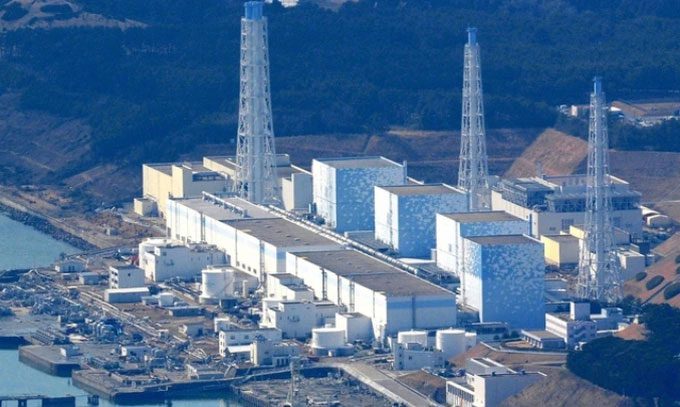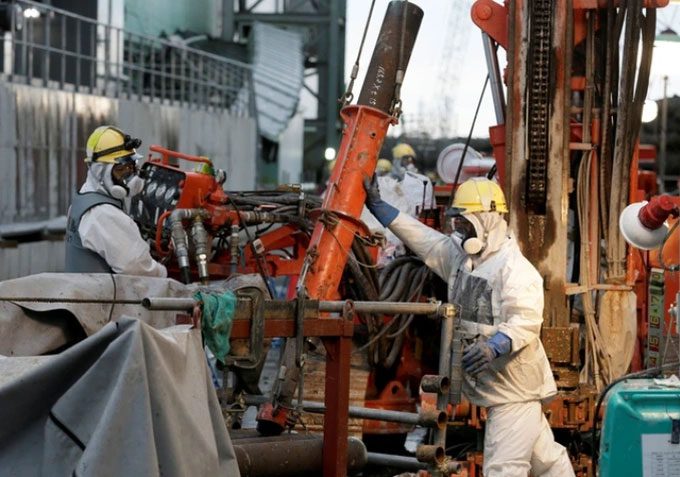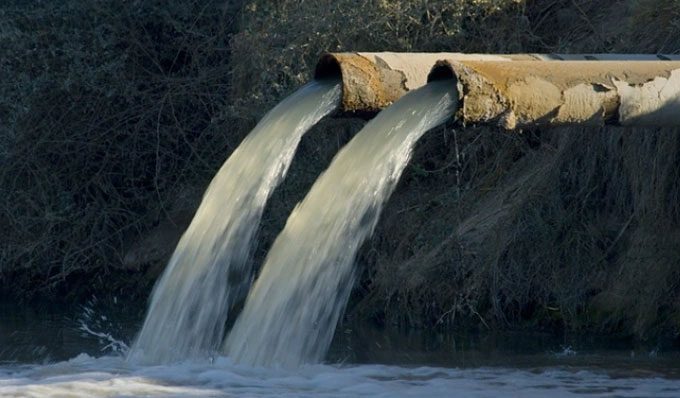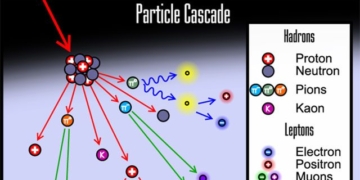The discharge of radioactive water is a necessary step towards decommissioning the Fukushima nuclear plant. However, this plan has met with mixed reactions.
Recently, according to Reuters, the International Atomic Energy Agency (IAEA) approved Japan’s plan to discharge treated radioactive water from the Fukushima plant into the sea, despite fierce opposition from Beijing and several countries in the region.

Dozens of thousands of tons of radioactive water at the Fukushima nuclear power plant are stored in special tanks (Image: Dailymail).
Specifically, this agency stated that Japan’s plans are in line with global safety standards and have “insignificant radioactive impact on humans and the environment.”
Previously, the Japanese government had repeatedly asserted that the treatment process for radioactive water is completely safe. To date, they have treated enough wastewater to fill 500 Olympic-sized swimming pools and can hardly store more.
However, the plan still faces strong opposition from some neighboring countries and international organizations. Greenpeace is concerned that the released radioactive substances could alter human DNA.
Countries including China and South Korea have repeatedly expressed concerns, while island nations in the Pacific fear that this could further contaminate seawater with radiation.
What substances are in the wastewater, and how is it treated?

Workers involved in the cleanup of the Fukushima Daiichi plant following the 2011 disaster (Image: China Daily).
According to Science.org, the wastewater treated at the Fukushima nuclear plant was previously used to cool fuel rods after they were severely damaged by the dual disaster of the earthquake and tsunami in 2011.
Japan stated that the water has been filtered to remove most dangerous radioactive elements, except for tritium, a hydrogen isotope that is very difficult to separate from water.
In fact, tritium is a radioactive isotope of hydrogen, occurring naturally and found in rainwater and seawater. Of course, because this content is very low, it is virtually harmless to humans.
Nonetheless, Nigel Marks, an associate professor of physics and astronomy at Curtin University in Australia, stated that it would take 60-100 years for this tritium to completely transform into harmless helium.
Meanwhile, Luk Bing-lam, president of the Hong Kong Nuclear Society, also warned that there may be many other radioactive substances still present in the wastewater at Fukushima, such as cesium-137 and strontium-90.
Another organization, Greenpeace, revealed that the 1.25 million tons of water stored at the plant still contains the radioactive isotope carbon-14, with a mass of about 63.6GBq (gigabecquerels).
They argue that the radioactive isotopes contained in the water “will cause genetic damage lasting up to a thousand years.” The carbon-14 isotope is also a radioactive compound that can damage human DNA under certain conditions.
However, according to a spokesperson for the Tokyo Electric Power Company (TEPCO), the wastewater has been treated based on a complex process, resulting in concentrations of radioactive isotopes in the water that are within safe limits.
Specifically, for harmful radioactive isotopes like carbon-14, the concentration is only 2 – 220 becquerels/liter, which is much lower than the regulatory levels for discharge into the environment. However, this figure remains a topic of controversy in many countries in the region.
Before being discharged into the Pacific Ocean, the treated radioactive water will also be diluted to below the international standard for tritium.
Why does Japan need to discharge radioactive water?

Currently, there are over 1.32 million tons of treated wastewater stored in tanks at the Fukushima plant (Image: Reuters).
According to Reuters, the dual disaster of the earthquake and tsunami in 2011 damaged the power supply and cooling systems of the Fukushima nuclear plant, causing the reactor core to overheat and contaminating the water inside the plant with high levels of radiation.
To remedy this situation, the Japanese government has pumped new water in to cool the fuel rods in the reactors. In addition, groundwater and rainwater leaking inside have combined, resulting in a large volume of radioactive wastewater that needs to be stored and treated.
To date, the Tokyo Electric Power Company (TEPCO) has constructed over 1,000 giant tanks to store a total of 1.32 million tons of wastewater. However, the company has stated that building more tanks is not a viable option and that they need to free up space soon to safely decommission the plant.
This is a complex process involving decontamination facilities, dismantling structures, and completely closing everything.
If successfully implemented, it will mark a significant milestone in efforts to end one of the largest nuclear disasters in history.
So far, an estimated 42,565 people, including 35,725 from Fukushima, have been displaced across northeastern Japan due to the impact of the radioactive contaminated water.




















































